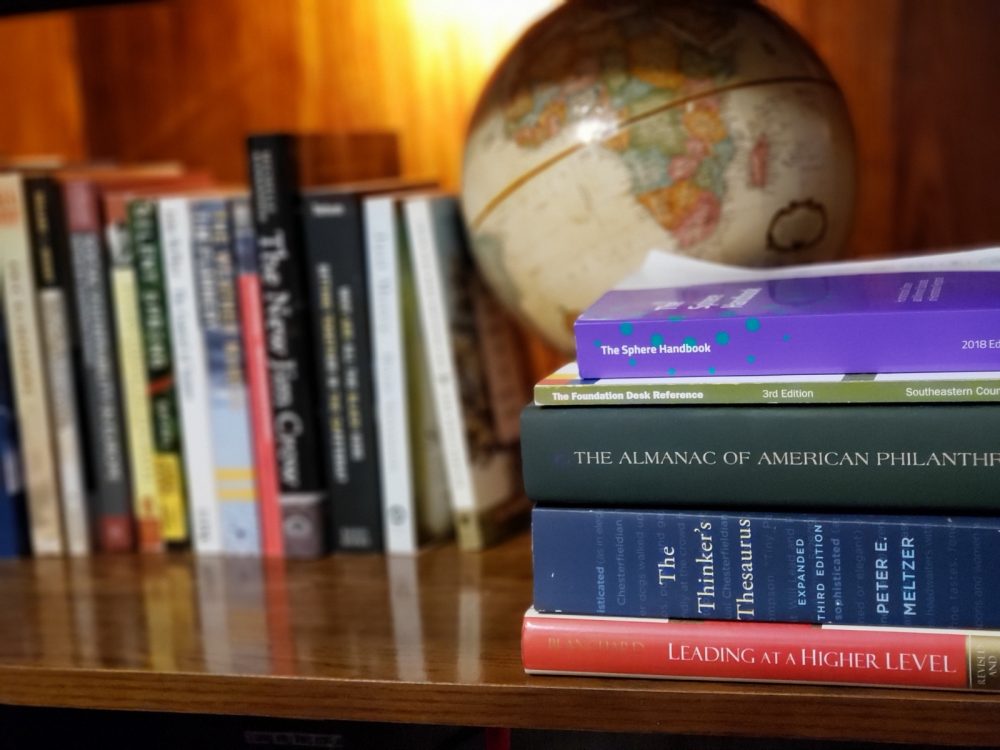Just keep reading
At a plenary session during the Women’s Philanthropy Institute in 2017, Trista Harris, then-president of the Minnesota Council on Foundations, argued that all philanthropists must set aside 5% of their time for research and development. She inspired me to commit two hours a week to reading, writing and dreaming about improving the field of disaster […]

At a plenary session during the Women’s Philanthropy Institute in 2017, Trista Harris, then-president of the Minnesota Council on Foundations, argued that all philanthropists must set aside 5% of their time for research and development. She inspired me to commit two hours a week to reading, writing and dreaming about improving the field of disaster philanthropy.
But the abundance of news, data and information can sometimes overwhelm. Especially in the United States, where the recent election and the destructive pandemic overlay, it seems like there are more words to digest in a given moment than possible. How can I cut through the noise?
- The Daily Yonder provides news, commentary and analysis about and for rural America. A grantee of the Center for Disaster Philanthropy’s (CDP), I regularly turn to this website, particularly when thinking about how the pandemic is changing rural communities. Regular reports include updates on COVID-19 infections and deaths in rural counties and trends analysis of what type of counties and regions appear to be improving or getting worse. They also track the economic impact of the pandemic on rural areas.
- The New Humanitarian primarily covers aid and accountability, conflict, environment and disasters and migration. Their work seeks to “cast a more critical eye over the multibillion-dollar emergency aid industry and draw attention to its failures at a time of unprecedented humanitarian need.”
- InterNews empowers people worldwide with trustworthy, high-quality news and information to make informed decisions, participate in their communities and hold power to account. They work to realize the potential of a digitally connected world: a world in which evidence-based information advances human progress, enables broad opportunity and accountability and fuels vibrant civic debate. CDP has funded their pandemic-related work in southern Zimbabwe and wildfire-related work in Northern California.
- Reliefweb monitors and collects information from more than 4,000 key sources, including humanitarian agencies at the international and local levels, governments, think-tanks and research institutions and the media. The site is my go-to place for clear, concise and up-to-the-minute reports, maps, charts, infographics and articles on humanitarian assistance activities globally. One can search by country, disaster event or organization to find all the information on humanitarian crises you could ever want. And, they have a stellar job board and training series, too!
- Forced Migration Review raises awareness of lesser-known displacement crises and contributes to improving policy and practice for people affected by forced migration. The November issue, which focuses on Recognising Refugees, explores the shortcomings, challenges and innovations in refugee status determination processes worldwide and their consequences for refugees/asylum seekers.
As you think about carving out 5% of your workweek for learning and reflection, I hope you will consider the sites above. These resources represent a handful of essential reads for donors and grantmakers who want to make informed, strategic giving decisions in times of disasters. They offer high-quality, well-informed information and solutions on the pandemic, humanitarian crises and disaster events globally.
